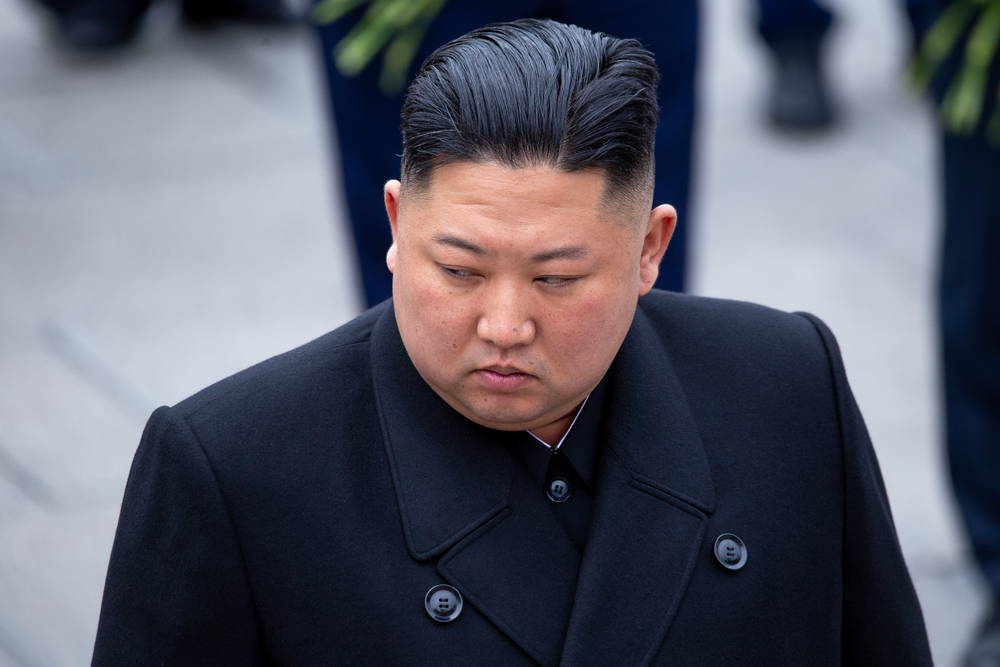
SEOUL, Korea, Republic Of — North Korea said Thursday leader Kim Jong Un supervised test firings of a new multiple rocket launcher system he sees as soon serving a “main role” in his military’s land combat operations.
The report by North Korea’s official Korean Central News Agency on Thursday disputed the assessment by South Korea’s military, which had concluded Wednesday’s launches as two short-range ballistic missiles.
The launches from the eastern coastal town of Wonsan were North Korea’s second weapons test in less than a week and were seen as a move to keep up pressure on Washington and Seoul amid a stalemate in nuclear negotiations. Pyongyang has also expressed anger over planned U.S.-South Korea military drills.
KCNA said Kim expressed satisfaction over the test firings and said the newly developed rocket system would create an “inescapable distress to the forces becoming a fat target of the weapon.”
The agency provided no specific descriptions of how the “large-calibre multiple launch guided rocket system” performed during the launches, but said the tests confirmed the system’s technical characteristics and “combat effectiveness.”
South Korea’s Joint Chiefs of Staff said Wednesday that the weapons it then assessed as missiles flew about 250 kilometres (155 miles) at an apogee of 30 kilometres (19 miles).
South Korea’s military had no immediate comment over the North Korean report. U.S. officials have downplayed the threat of the launches to the United States and its allies.
The U.N. Security Council is expected to discuss the latest launches behind closed doors Thursday at the request of the United Kingdom, France and Germany, council diplomats said.
Analysts say North Korea with its consecutive weapons tests is demonstrating its displeasure with the pace of nuclear diplomacy with Washington. The North’s testing activity could intensify if the negotiations do not proceed rapidly over the next few months, said Srinivasan Sitaraman, a North Korea expert at Clark University in Massachusetts.
By firing weapons that directly threaten South Korea but not the U.S. mainland or its Pacific territories, North Korea also appears to be testing how far Washington will tolerate its bellicosity without actually causing the nuclear negotiations to collapse, other experts say.
Since the collapse of a summit between Kim and Trump in February over disagreements in exchanging sanctions relief and disarmament, the North has significantly slowed diplomatic activity with the South while demanding Seoul to break away from Washington and proceed with joint economic projects that have been held back by U.S.-led sanctions against the North.
Last Thursday, North Korea fired two short-range ballistic missiles that Seoul officials said flew 600 kilometres (370 miles) and as high as 50 kilometres (30 miles) before landing in the sea. North Korea’s state media said those tests were supervised by Kim and were designed to deliver a “solemn warning” to South Korea over its purchase of high-tech, U.S.-made fighter jets and the planned military drills, which Pyongyang calls an invasion rehearsal. The North also tested short-range missiles on May 4 and 9.
Earlier last week, Kim visited a newly built submarine and expressed his satisfaction with its weapons system. North Korea said its deployment was “near at hand.”
In a private briefing to lawmakers Wednesday, South Korean military intelligence officers said they’ve determined that the submarine likely has three launch tubes for missiles, according to Lee Hye-hoon, head of parliament’s intelligence committee. If confirmed, it would be North Korea’s first operational submarine with missile launch tubes, some experts said.
North Korea acquiring the ability to launch missiles from submarines would be an alarming development because such missiles are harder to detect in advance.
Wednesday’s launches came hours after a senior U.S. official said President Donald Trump sent Kim mementos from his brief visit to an inter-Korean border town late last month.
The official said a top staffer from the National Security Council hand-delivered photographs from the leaders’ June meeting at the Korean Demilitarized Zone to a North Korean official last week. The Trump administration official spoke on the condition of anonymity because the official wasn’t authorized to speak publicly.
The DMZ meeting was the third summit between Trump and Kim. At their second meeting, in Vietnam in February, Trump rejected Kim’s demand for widespread sanctions relief in return for dismantling the North’s main nuclear complex, a partial disarmament step.
During the DMZ meeting, Trump and Kim agreed to resume nuclear diplomacy in coming weeks, but there hasn’t been any known meeting between the countries.